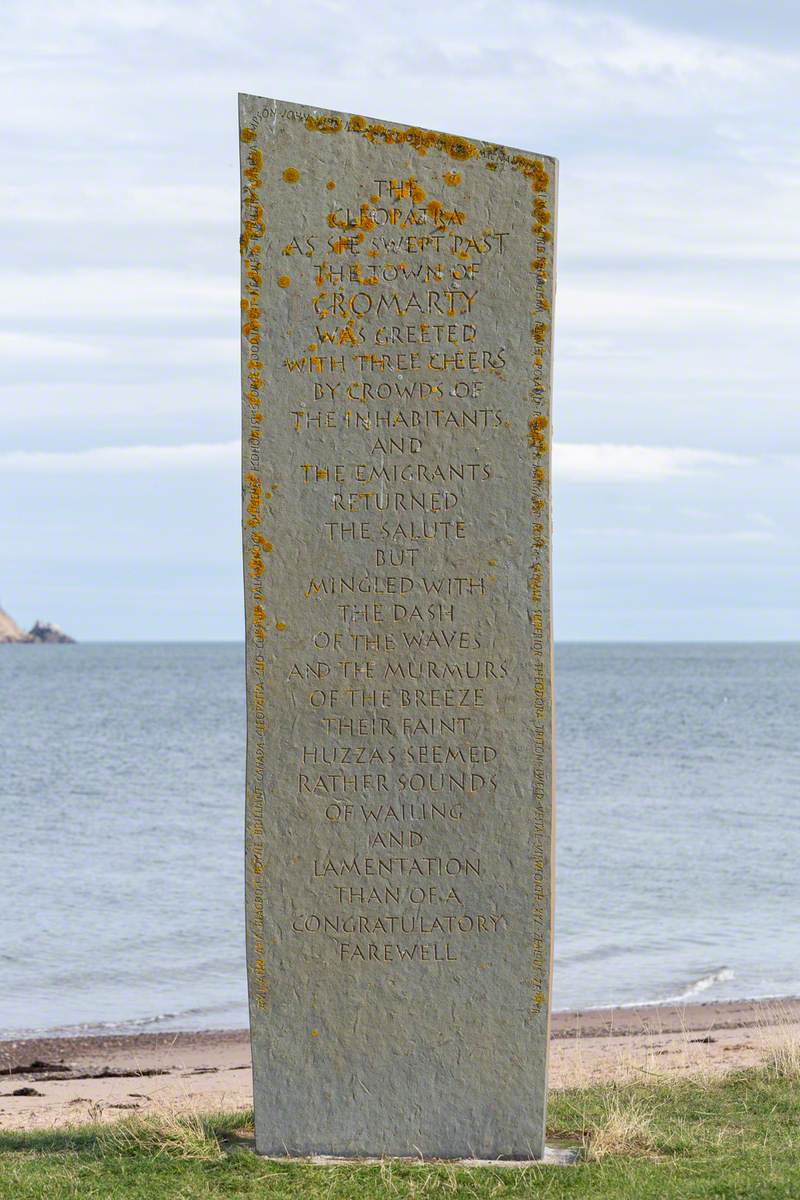
Emigration from both Caithness and Sutherland to Canada was substantive in terms of numbers of people who left.
Ships left Thurso, Cromarty, Lochinver and sometimes Dornoch. Various agents were employed to encourage emigration and in some cases ships lists will identify the people. Many found a good new life, often after significant hardships while others were disillusioned by what they found.
In 1773, the Tacksman for the Sandside Estate at Borlum, James Hogg, arranged for the ship The Bachelor to call at Thurso. It seems to have been fraught with delays and eventually damaged while in Shetland where the passengers were effectively stranded.
Some we believe remained in Shetland whereas others returned to Edinburgh following the repair of the damaged ship.
The cost of emigration often meant a family having to sell many of their goods etc to raise the fee. Ship’s passage for individuals aged eight and above was three pounds and ten shillings.
280 passengers were selected. Hogg claimed that no one was coerced to leave.
James Hogg himself eventually settled in North Carolina where he already had a brother. Today he is remembered in Hillsburgh North Carolina.
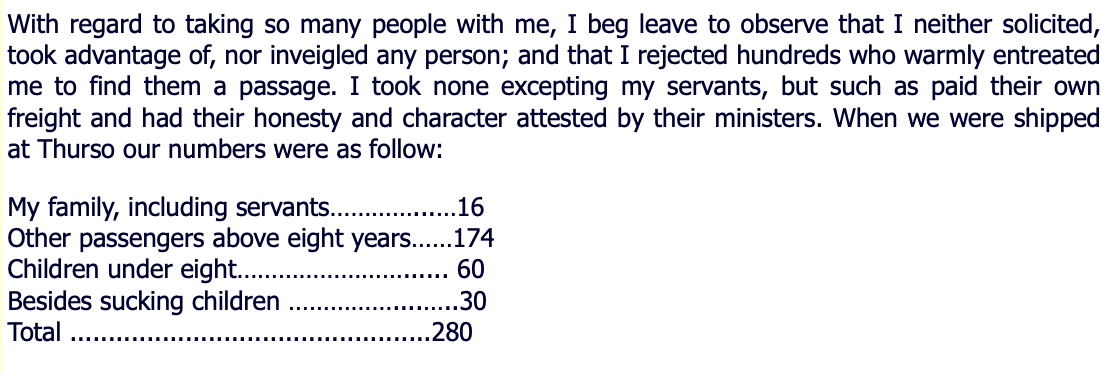
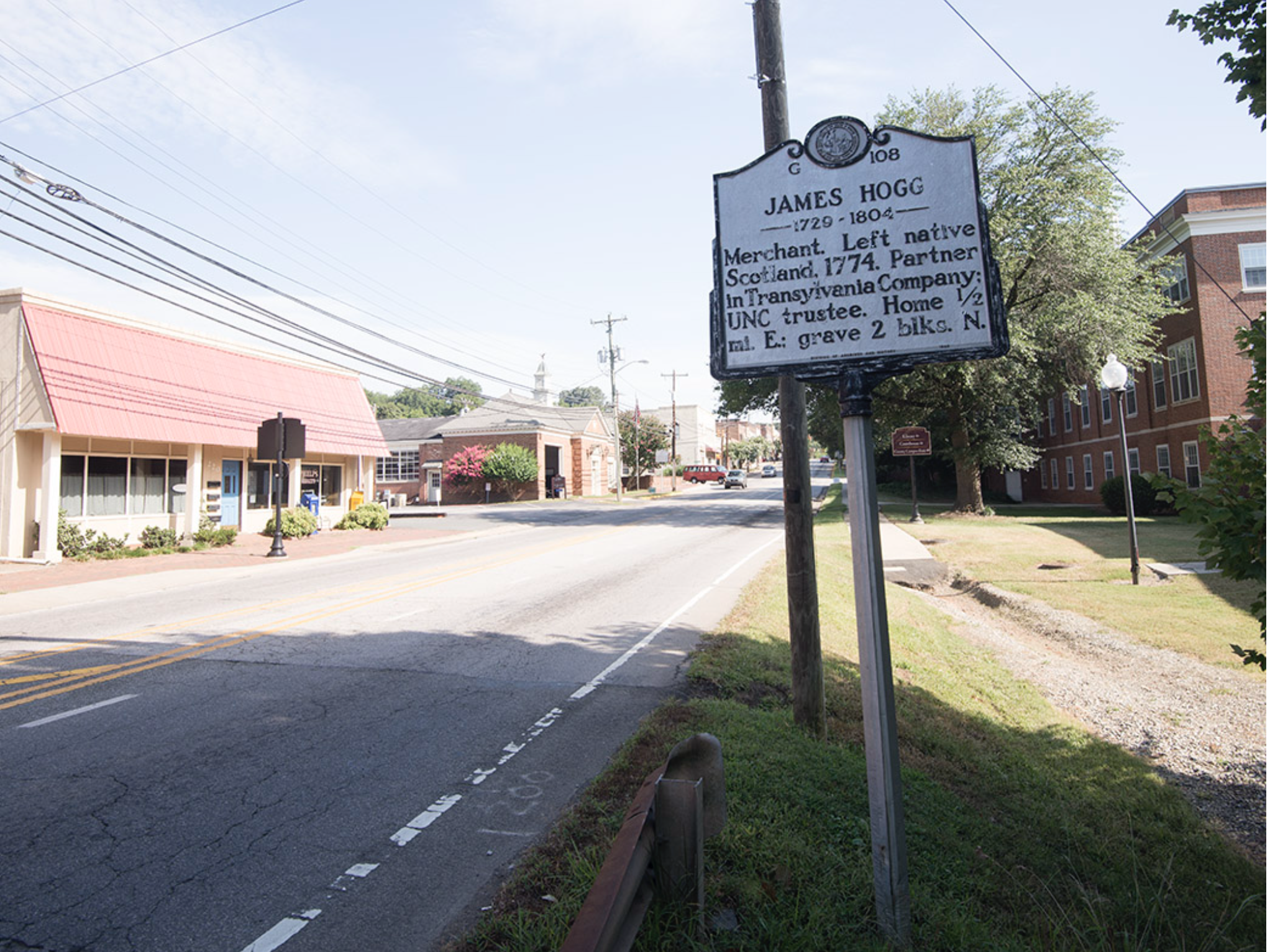
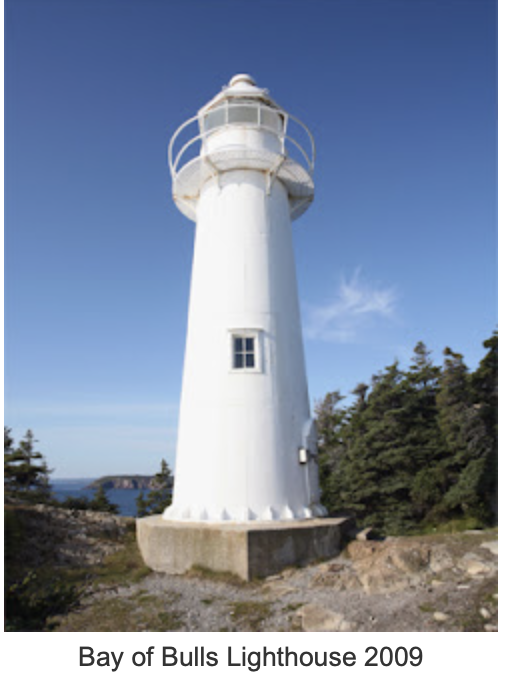
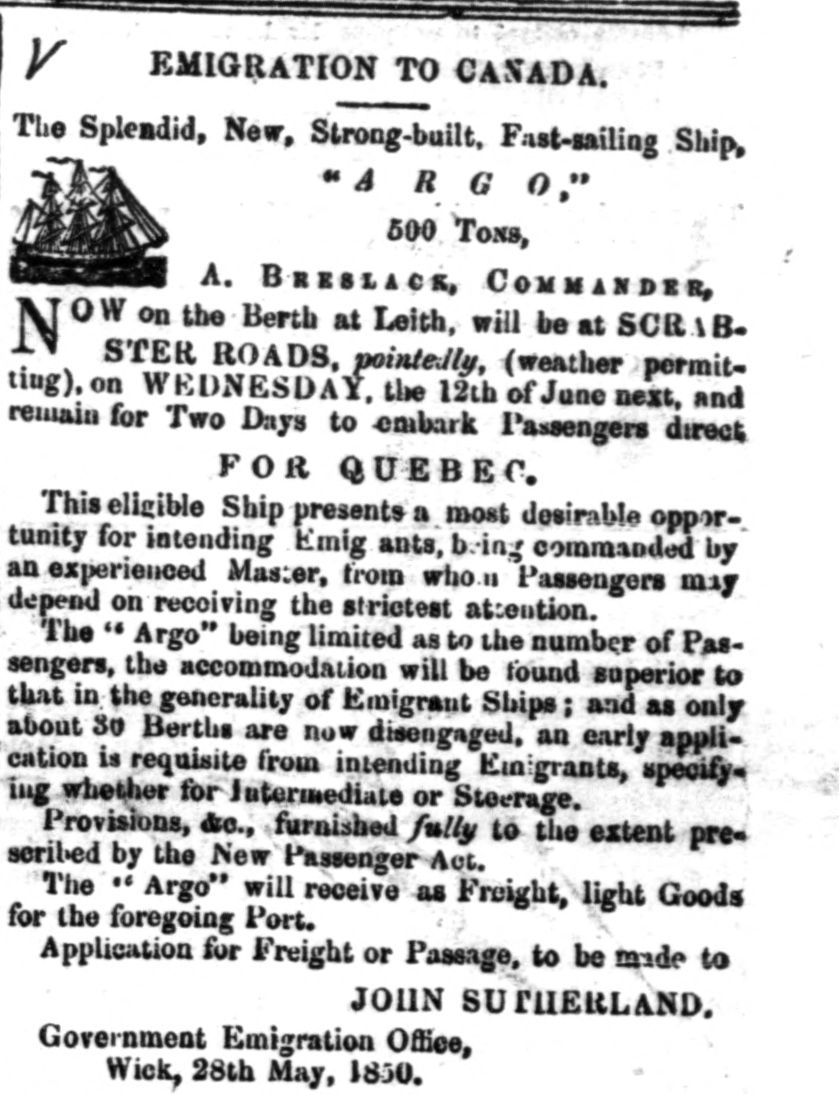
The Bachelor eventually reached its destination, but this was not always the case.
The brig Rambler of Leith was shipwrecked on the 29th of October 1807 in the Bay of Bulls, Newfoundland.
The ship was travelling from Scrabster, Thurso in Caithness to Pictou in Canada. She had on board 130 immigrant passengers, fourteen seamen plus the Captain and Surgeon. The only survivors were three passengers, the second mate and four seamen.
One of the survivors was Jean Gunn the daughter of Alex Gunn, Ramsdale, Strathmore. The waves threw Jean up onto dry land where she then helped same another man originally from Forsinard
One of the main emigration agents in the North of Scotland was John Sutherland.
Sutherland shared his time between Wick and Nova Scotia, where he eventually settled. Sutherland operated out of premises in Argyle Square Wick where he lived along with his wife Barbara MacLeay.
The reasons for emigration varied but poverty, the cost of rental and lack of food were common in many accounts:
Wm. Sutherland, aged Forty, a Farmer, married, hath five children from 19 to 9 years old, lived last at Strathhalladale in the Parish of Rea, in the County of Caithness, upon the Estate of the late Colonel McKay of Bighouse; Intends to go to North Carolina; left his own country because the Rents were raised, as Soldiers returning upon the peace with a little money had offered higher Rents; and longer Fines or Grassums, besides the Services were oppressive in the highest degree. That from his Farm which paid 60 Merks Scots, he was obliged to find two Horses and two Servants from the middle of July to the end of Harvest solely at his own Expense, besides ploughing, Cutting Turf, making middings, mixing Dung and leading it out in Seed time, and besides cutting, winning, leading and stacking 10 Fathoms of Peats yearly, all done without bo much as a bit of bread or a drink to his Servants.
Copyright © 2025 All rights reserved
